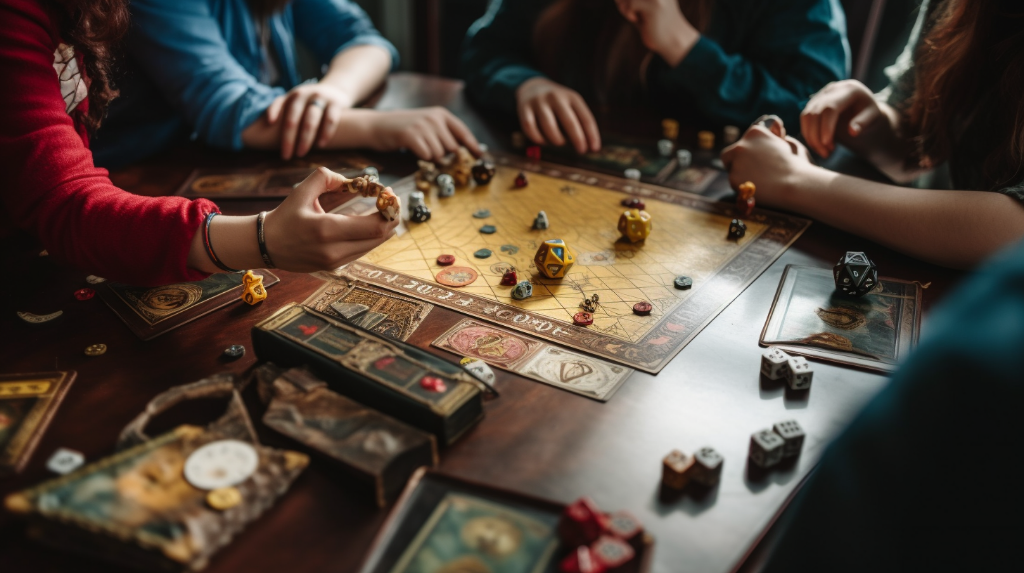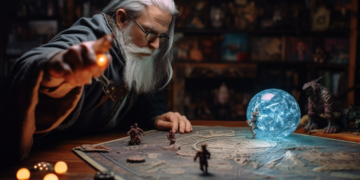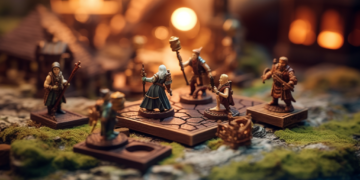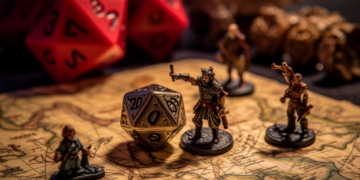
Picture this: you’re deep within the jagged heart of a dungeon. The air is thick with the scent of danger, your party’s faces etched with apprehension. The only barrier between you and the treasure you seek is a gruff, towering goliath guard. Your swords may not scratch him, your arrows may go astray, but there’s another weapon in your arsenal. A potent cantrip that could turn the tide: the Friends spell. This seemingly innocent spell can be a game-changer, but it comes with its own set of rules and consequences. Understanding its mechanics is key to wielding its power effectively.
Unveiling the Magic: An Overview of the Friends 5e Spell
At its core, the Friends spell is a cantrip that grants you a significant advantage in social interactions. When cast, it gives you the ability to influence a creature of your choice that isn’t hostile towards you, making them temporarily more amicable. The spell requires a somatic component, a touch, and lasts for up to a minute, allowing you to charm your way through tricky situations.
However, it’s not a one-size-fits-all solution. The spell’s effectiveness varies greatly in combat and non-combat situations. In the heat of battle, it’s not as influential, but in diplomatic situations, it can be your greatest ally.
Friends or Foes: The Double-Edged Sword
As enticing as the Friends spell may be, it’s not without its drawbacks. Once the spell’s duration ends, the creature becomes aware that you used magic to influence its mood and could become hostile. In essence, Friends is more of a “rent-a-friend” service, with the potential for a hefty backlash once the spell expires.
Imagine hosting an extravagant party, only to reveal at the end that the guests were there under the influence of magic. How would they react? Would they laugh it off, or would their smiles turn into scowls?
Using Friends is akin to playing with fire. It can warm your path, but if not handled carefully, it can also burn bridges. The spell’s power lies in its strategic use, and knowing when to cast it is just as important as knowing how.
Spellcasting Scenarios: When to Use Friends 5e
So, you have a quiver full of spells, and you’re wondering when to use the Friends spell? Timing and context are crucial. Picture this: You’re in a bustling market of Baldur’s Gate, trying to negotiate a deal with a stubborn merchant, or perhaps you’re in the dark, foreboding caverns of Undermountain, attempting to distract a horde of goblins. These are instances where the Friends spell might just be your ace in the hole.
However, remember it’s not a one-size-fits-all solution. The key is to analyze the situation, weigh the risks and rewards, and then decide whether casting Friends is the right move.
The Art of Negotiation: Using Friends in Diplomatic Scenarios
Imagine you’re in the royal court of Waterdeep, trying to persuade a noble to lend his troops for an impending battle. You’re finding it tough to break through his stubborn resolve. This is where the Friends spell can tip the scales in your favor. Casting it subtly, you can enhance your charisma and convince the noble about the righteousness of your cause.
However, once the spell’s duration ends, the noble will realize he’s been magically manipulated. Now, this could lead to you being banished from the court, or worse. So, how do you mitigate this? Perhaps, you can arrange for a distraction, or have a plausible reason for your sudden departure. Remember, the Friends spell is a tool, and like any tool, its effectiveness depends on how wisely you use it.
Tricks and Traps: Using Friends for Misdirection
Now, let’s switch the scene to a murky dungeon filled with lurking dangers. You’ve just stumbled upon a group of orcs. A head-on confrontation seems risky. What do you do? Casting Friends on one orc, you can create a diversion, turning the orcs against each other while you slip away unnoticed.
The key here is to plan your escape route in advance and move quickly once the spell ends. After all, you wouldn’t want to be around when they realize they’ve been tricked, would you?
Mastering the Spell: Techniques for Effective Use
Using Friends effectively requires a blend of strategic thinking, creativity, and understanding of the game’s mechanics. It’s not just about casting the spell; it’s about what you do before, during, and after the spell is cast.
For instance, consider your character’s abilities. A high charisma score can make your Friends spell more potent, turning a tough negotiation into a cakewalk. Similarly, your persuasion skills can be the difference between a successful deception and a failed one.
Also, it pays to remember that the Friends spell doesn’t guarantee success—it merely provides a boost. The outcome still depends on your actions and decisions. So, think on your feet, adapt, and don’t be afraid to try something unconventional. Who knows? It might just work!
Interactions and Interferences: Friends Spell with Other Magic
Have you ever wondered how the ‘Friends’ spell interacts with other spells or magical items in the world of Dungeons & Dragons? The answer is as intricate as a spider’s web, with various threads of possibility woven together. Let’s unravel this web using some gameplay examples for clarity.
For instance, consider a situation where ‘Friends’ is combined with the ‘Disguise Self’ spell. The result? A potent mix of charm and illusion that could make even the most stubborn orc lower his guard. However, tread carefully, as the combination of these spells may lead to unexpected consequences once the illusion fades and ‘Friends’ ends.
It’s also important to consider the potential clashes that may arise. A classic example would be the interaction between ‘Friends’ and ‘Detect Magic’. If a suspicious NPC casts ‘Detect Magic’ while under the influence of ‘Friends’, they may realize they’ve been charmed, leading to a swift and possibly hostile end to your friendly encounter.
Understanding these interactions is crucial for maximizing the potential of the ‘Friends’ spell, while also avoiding unexpected pitfalls. So, are you ready to weave your own web of magical intrigue?
| Spell/Magic Item | Interaction with ‘Friends’ |
|---|---|
| Disguise Self | Potentially enhances the efficacy of ‘Friends’ by adding an element of illusion. |
| Detect Magic | May reveal the presence of ‘Friends’, possibly causing hostility. |
| Zone of Truth | Could force the caster to reveal the use of ‘Friends’, leading to possible complications. |
| Charm Person | May interfere with ‘Friends’, as the target may already be charmed. |
| Amulet of Proof Against Detection and Location | Can prevent the detection of ‘Friends’, enabling a smoother interaction. |
Expert Insights: Tips from Seasoned Players
Learning from the experiences of seasoned D&D players can be invaluable when mastering the ‘Friends’ spell. Their tips and insights, forged in the heat of countless gaming sessions, can provide a guiding light for both new and experienced players alike.
One of the common mistakes rookie players make is using ‘Friends’ without considering its aftermath. Remember, once the spell ends, the charmed creature becomes aware that it was charmed by you. This can lead to unnecessary hostility, or worse, a tavern brawl.
Another tip from the veterans is to use ‘Friends’ creatively. Don’t just save it for persuasion checks. Use it to create diversions, sow discord among enemies, or even as a bargaining chip. The possibilities are as boundless as your imagination.
Finally, remember that ‘Friends’ is a tool, not a crutch. Over-reliance on it can lead to predictable gameplay and limit your growth as a player. So, are you ready to take these insights and carve your own path in your D&D adventure?
- Plan Ahead: Always consider the aftermath before casting ‘Friends’.
- Get Creative: Don’t limit the use of ‘Friends’ to persuasion checks.
- Don’t Overuse: Avoid becoming too reliant on ‘Friends’.
- Use with Other Spells: Experiment with combining ‘Friends’ with other spells or magic items.
- Learn from Mistakes: Reflect on past uses of ‘Friends’ to continuously improve your gameplay.
Case in Point: Memorable Friends 5e Moments
Have you ever wondered about the ingenious ways the ‘Friends’ spell has been wielded in actual gameplay? Let’s walk through the corridors of memory and relive some unforgettable moments where the spell has shone in all its glory.
Picture a dimly lit tavern, the air heavy with tension. A party member, a silver-tongued bard, is in a heated debate with a hostile orc chieftain. Their argument teeters on the brink of descending into violence, threatening to erupt into a bloodbath. The bard, with a sly wink, casts ‘Friends’. Suddenly, the orc’s demeanor softens, and he starts agreeing to the bard’s terms. The potential disaster is averted, and the party leaves the tavern, unscathed and victorious.
But it isn’t always about crowning victories. Sometimes, it’s about those moments of clever maneuvering and quick-thinking that stand out. Picture an arcane trickster, cornered by an angry mob. With no way out, she casts ‘Friends’ on the mob’s leader, buying herself just enough time to slip away unnoticed. It’s these moments that truly showcase the spell’s versatility and the importance of creative thinking.
The Aftermath: Handling Fallout Post-Friends
As we’ve seen, the ‘Friends’ spell can be a powerful tool in a player’s arsenal, but it’s not without its risks. What happens when the spell ends and the enchanted friendliness wears off?
Understanding the potential fallout is crucial. You’ve just manipulated someone’s emotions and when the spell ends, they’re likely to feel used and hostile. So how do you handle it? The key is foresight. Have an exit strategy ready. Whether it’s a quick escape or a well-crafted explanation, being prepared will help you navigate the tricky waters of post-spell hostility.
Remember the bard in the tavern? As the ‘Friends’ spell ended, he quickly launched into a rousing song, captivating the orc chieftain and the crowd, diffusing any potential hostility. The trickster? She was long gone before her ‘friend’ realized he’d been manipulated. Think ahead, plan your moves, and you’ll be able to wield this spell with minimal consequences.
Final Thoughts: The Power of Friends 5e
There’s no denying the power of the ‘Friends’ spell. It can turn foes into allies, diffuse tense situations, and give you the upper hand in negotiations. But like any powerful tool, it requires careful handling. Used without thought, it can lead to disastrous consequences.
But don’t let that deter you. Embrace the challenge. Experiment with the spell, find new ways to use it, and share your experiences. After all, isn’t that what D&D is all about? The thrill of the unexpected, the joy of creativity, and the shared tales of adventure.
- Do: Plan ahead. Have an exit strategy ready for when the spell ends.
- Do: Use it strategically. It can be a powerful tool in negotiations or to create diversions.
- Don’t: Use it without thought. Remember, the person you cast it on will know they’ve been manipulated once the spell ends.
- Don’t: Rely on it too much. It’s a tool, not a crutch. D&D is all about creativity and thinking on your feet.






